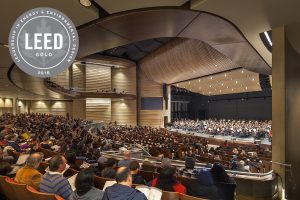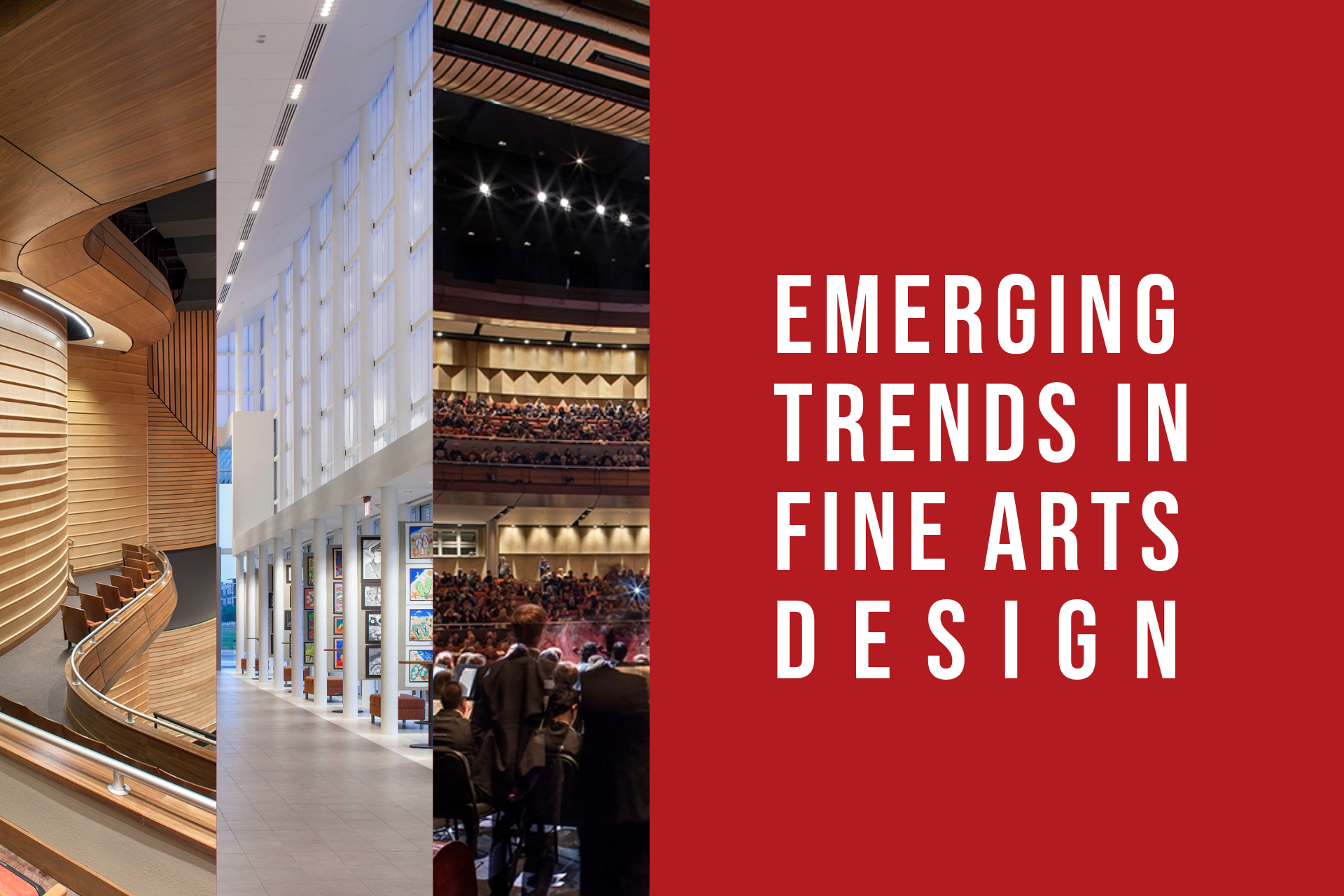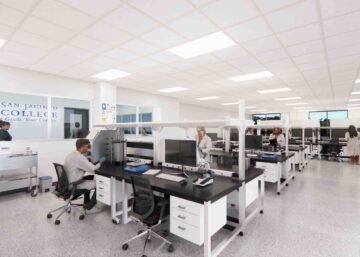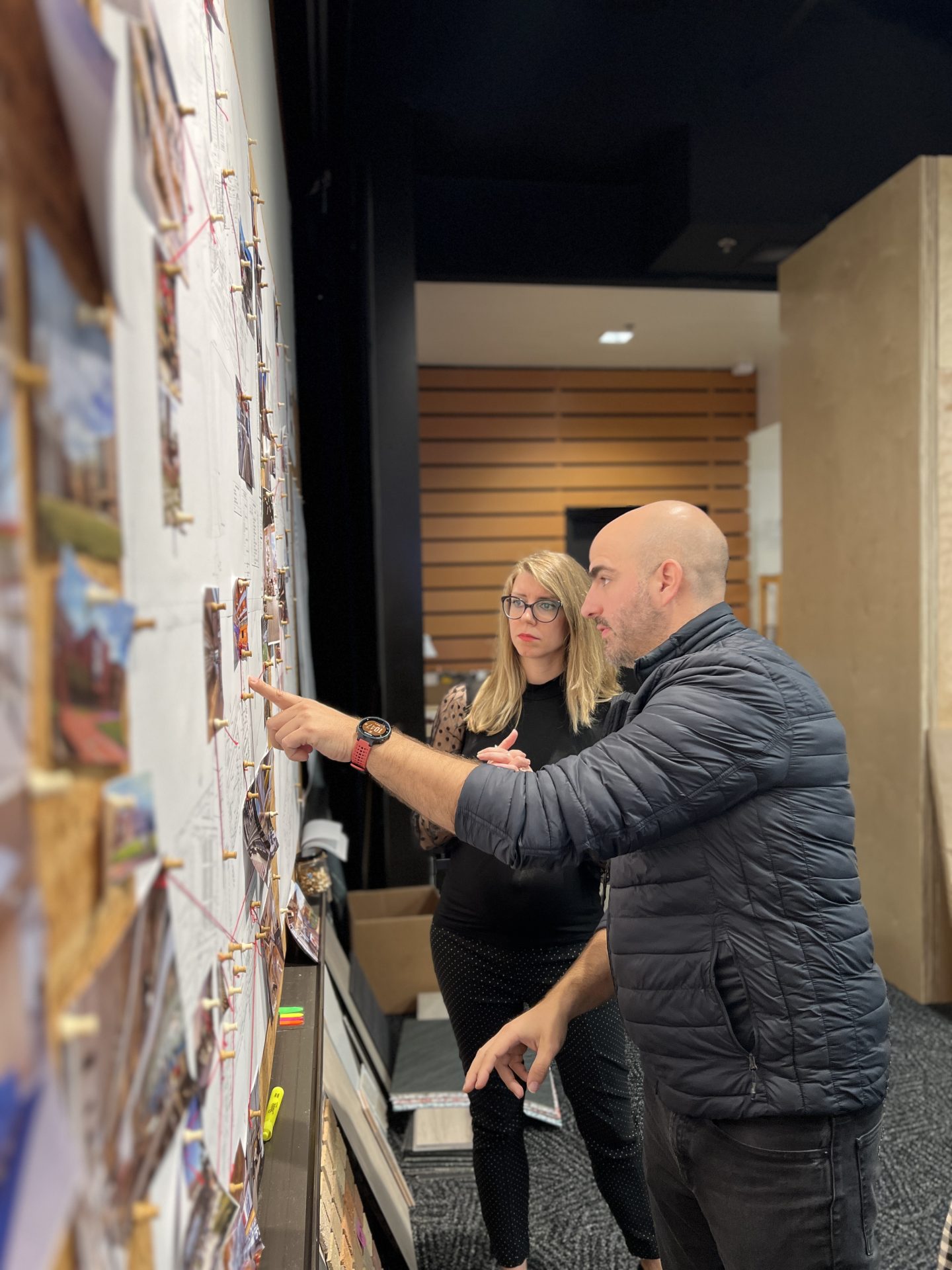Originally published in American Schools & University Magazine
What advantage does a centralized performance venue have over separate auditoriums on each campus?
An emerging trend is to build a large, centralized performing arts center at the district level and smaller more tightly focused auditoriums for theater or music on local campuses. The benefit of this approach is to consolidate physical and fiscal resources on a larger, shared venue, allowing every campus to stage high-end theater/ musical productions. Then, provide a local space that supports one thing exceptionally well. For example, Austin ISD hired Pfluger to design a performing arts center that includes a 1,200-seat main auditorium, a 250-seat black box theater, a dance studio, multi-purpose rehearsal and meeting rooms, visual arts display space, a kiln room, a recording studio, fine arts library, and outdoor amphitheater, but continues to build small 500-seat theaters on middle and high school campuses.

We can’t afford that! How can we breathe new life into an old facility?
Countless dated performance spaces await a transformative touch, ready to embrace the future of performing arts. Strategic design choices play a pivotal role in elevating student engagement, whether on stage, behind the scenes or in the audience enhancing their overall connection with and appreciation for the arts. Here are four ideas:
1. Student engagement can be supercharged by fine-tuning your fine arts spaces. For instance, installing gallery spaces where student work can be integrated into the patron experience and designing appropriate practice spaces for theater and dance that put performing arts education on display.
2. To improve the patron experience, you can correct poor sightlines and provide more flexible seating options.
3. From the theatrical side, if you don’t have a full fly loft, new motorized rigging solutions increase production options for stages with dead-hung rigging.
4. Improving the acoustics of a performance by reshaping the audience chamber and using newer acoustical improvised materials will give a better auditory experience.
What professional trends are finding their way into school theaters?
There are more options for fine-tuning a performance space for specific needs. Flooring manufacturers now offer tunable floors that can quickly switch from a sprung dance floor to a rigid theatre-ready surface at the push of a button. This allows one venue to meet different requirements within the same day while reducing downtime and physical labor.
Systems that heighten the immersive experience are becoming more common. Projectors can be used in the audience chamber to project images 3D-mapped to the ceilings and walls without distortion. Surround sound systems provide sound effects and can emulate famous performance halls in your local auditorium. Immersive seats can now be easily deployed with standard fog machines so audiences can smell the flowers or the butcher shop when a scene unfolds. Schools don’t need to own these systems; vendors can provide the equipment and the mapping services for a fee.
These three topics are the tip of the iceberg! Every performance venue is unique, and whether new construction or upgrading an existing facility, there are options to make performing arts a more meaningful experience.









